In the early 1900s, leisure travel in general, and luxurious train travel specifically, were experiences reserved for the wealthy and elite.
From the early to mid-20th century, trains became a popular means of transportation. Through these classic photographs, we can see how luxurious train travel once was, featuring lavish furnishings and gourmet dining, holding a special place in the rich history of the railway industry.
The 1920s and 1930s marked a golden age for railway travel in the United States and Europe, a time when railroads were portrayed as modern conveniences that transported passengers to romantic getaways in luxury and comfort.
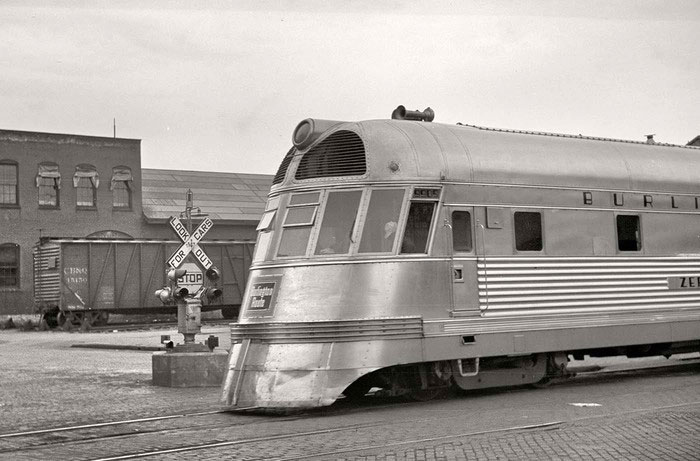
American railroads once flourished.
American railroads once flourished, contributing significantly to the growth of the U.S. economy. In 1825, the world’s first railroad was established in England, birthplace of the Industrial Revolution. Four years later, the first American railroad, the Baltimore and Ohio Railroad, was completed. From this point onward, railroad construction in the United States entered a peak phase. Within 20 years, the total length of railroads in the U.S. increased to 14,000 miles. The emergence of American railroads coincided with the rise of economic liberalism in Europe and the United States. Consequently, the U.S. railroad industry developed a tradition of private investment from its inception, similar to other economic sectors of the time.
This was also a decade of prosperity and economic growth, during which middle-class families could afford one of the most luxurious items for travel at the time: automobiles.
While automobiles diminished the demand for short-haul rail services as people could easily drive from town to town, during this period, paved roads were not yet widespread, and the uncertainty of amenities like gas stations and roadside restaurants made long-distance train travel more convenient and preferred.
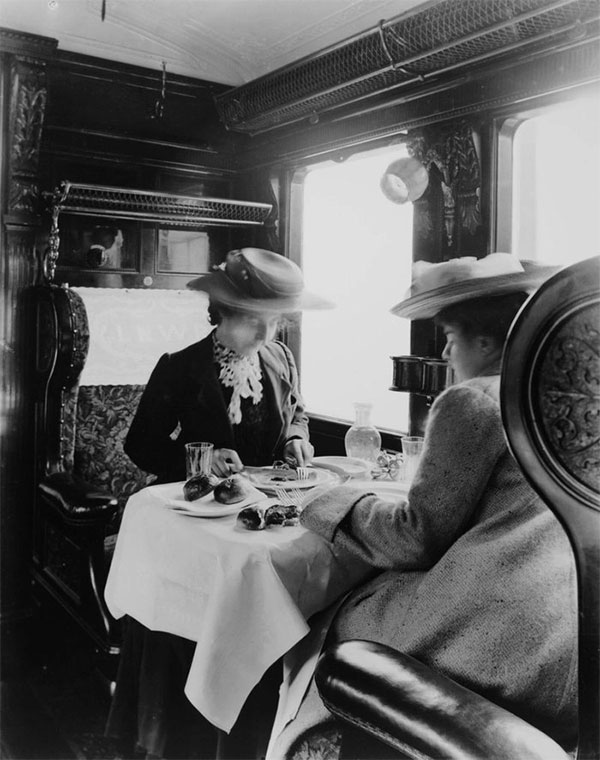
Train travel made another leap in the 1930s.
Between 1850 and 1910, the United States constructed over 370,000 miles of railroad, averaging more than 6,000 miles per year. During this period, major rail lines and branch lines, such as the Santa Fe Railroad, were completed, forming a vast interconnected railroad network across the map of the United States.
For decades, American railroads like the New York Central embarked on new advertising campaigns to combat the “threat” of losing market share to automobiles.
Posters, calendars, and magazine advertisements romanticized train travel, evolving in appearance and technology while adding new destinations.
The New York Central hired industrial designer Henry Dreyfuss, who redesigned not only their locomotives and passenger cars but nearly everything passengers might encounter, from dinnerware to matchboxes.
Train travel made another leap in the 1930s with the introduction of luxury trains, fully equipped with air conditioning and other amenities.
As the 1930s progressed, railroad companies found themselves compelled to enhance services and amenities to attract passengers. Accordingly, they upgraded dining cars to be luxurious and ensured that passenger cars looked elegant and high-end.
The Royal Blue was the flagship train of the B&O Railroad and was known for having some of the best dining cars on the route between New York City and Washington, D.C.
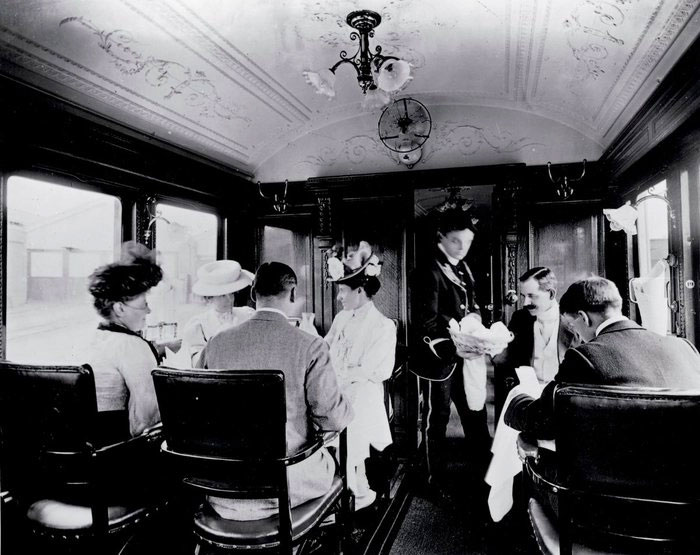
In 1916, total investment in the U.S. railroad industry reached $21 billion.
The golden age of American railroads coincided with the peak of World War I in Europe. In 1916, total investment in the U.S. railroad industry reached $21 billion, nearly double the annual GDP of the United Kingdom before World War I. That same year, income from U.S. railroad operations reached $3.35 billion, and the total workforce of railroad companies was 1.7 million, equivalent to the total number of personnel in the armies and navies of France and Germany before World War I. At that time, the United States had nearly 600,000 miles of railroad, accounting for about half of the world’s total railroad mileage. In contrast, the total railroad mileage of the United Kingdom, France, and Germany combined was only 150,000 miles.
Railroads played a significant role in the development of the United States, from the Industrial Revolution in the Northeast (1810–1850) to westward settlement (1850–1890).
The peak development of U.S. railroads began with the establishment of the Baltimore and Ohio Railroad for passenger and freight transport in 1827 and the commencement of construction heading west across the eastern Appalachian Mountains the following year in 1828.
It thrived with continuous railroad construction projects for the next 45 years until the financial crisis of 1873, which led to a major economic depression that caused many companies to go bankrupt and temporarily stunted growth.
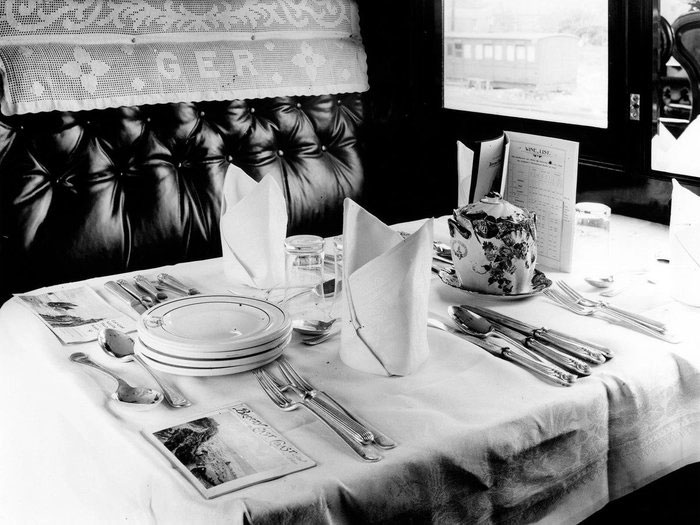
To encourage development, the federal government granted a substantial amount of its land to railroad companies for free. Additionally, there were tax reductions and exemptions for raw materials necessary for railroad construction, and the federal government provided loans to railroad companies based on the miles of railroad constructed.
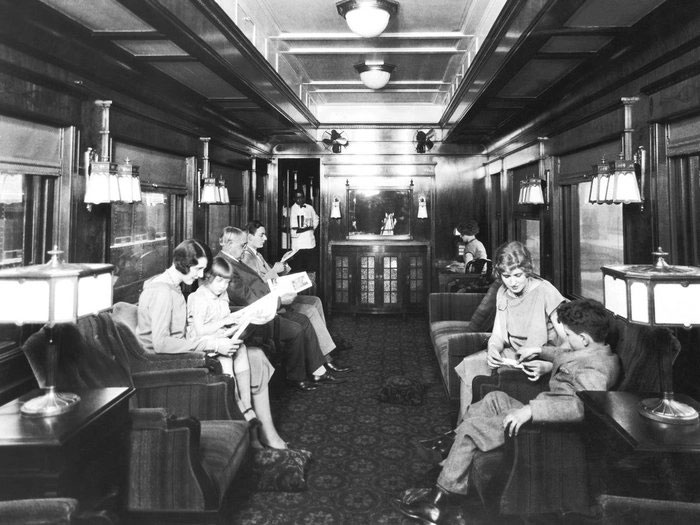
Railroads facilitated smooth transportation for U.S. industry and agriculture, connecting the eastern and western coasts, which became a golden path for the development of the American West. The enormous capital demand for railroad development also directly birthed the U.S. capital market, propelling the country forward to become a financial empire.
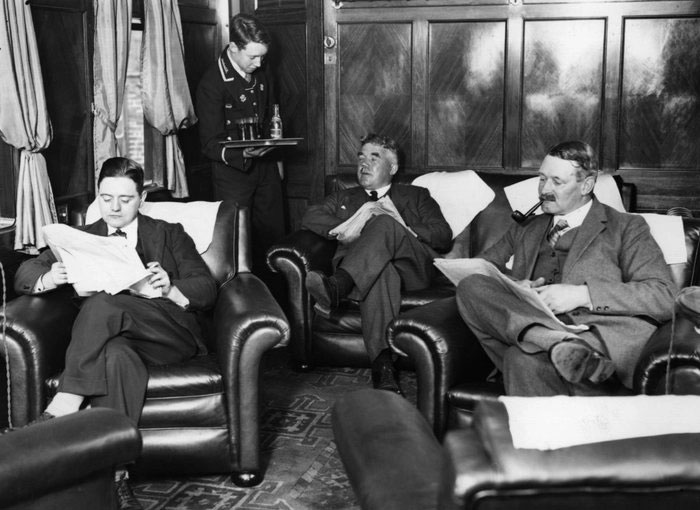
The modest and effective direction of the government spurred the remarkable development of U.S. railroads; the U.S. railroad industry thrived, contributing significantly to the economy of the time and helping to make America great.
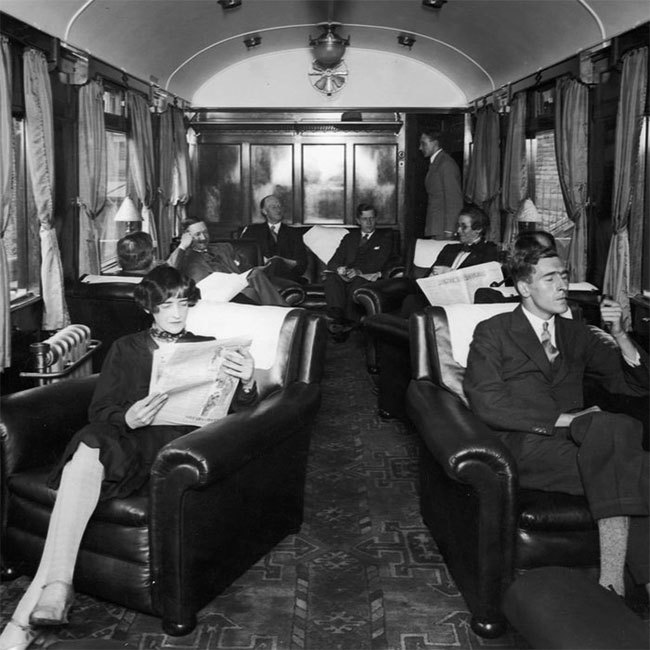
As the 20th century began, the limitations of American railroads started to become prominent, such as price discrimination, bureaucratic internal management, and a range of typical symptoms of monopolistic enterprises.

To address these shortcomings, the United States had to implement appropriate intervention measures in railroad operations. The railroad system remained privately operated, but the U.S. enacted legislation to freeze fares, reduce investment, limit corporate mergers within the railroad industry, and even required railroad companies not to abandon “public interest” routes and passenger transport, even if they were operating at a loss.

The Great Depression dealt an unprecedented blow to the American railroad industry. By the time World War II began, over 110,000 miles of railroad had gone bankrupt. After World War II ended, the U.S. economy became a driving force for global post-war recovery, yet the American railroad industry still struggled to regain its former glory.


















































